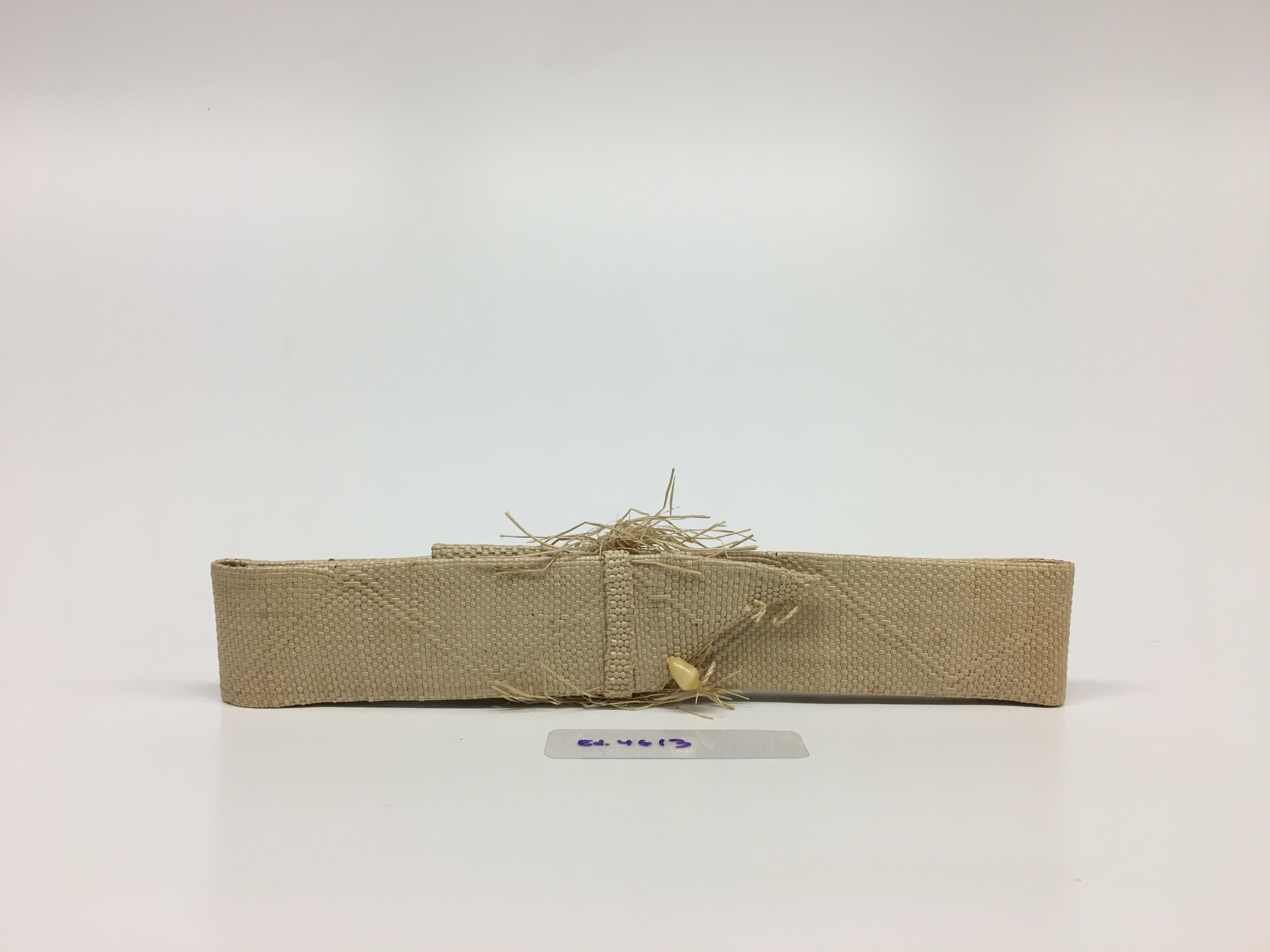
Kan̄ūr (belt)
kimej (coconut leaves (from new shoot))
alu (hollowed-shelled snails)
ED# 4613
Accessioned August 1959. Gift of Lutheran School.
Kan̄ūr in ej kōm̗m̗an jān kimej ko em̗ōj pirōki ippān doon. Rej l̗ōōti kimej kein ippān doon m̗ae rōtōpar depakpak eo rej kōn̗aan. Innām rej āje juon alu n̗a ie n̄an jikin loklok eo ilo m̗aan bwe kan̄ūr eo en dāpdep. Nan̄in āinl̗o̗k wōt jerbal ko an kan̄ūr ko jet, kan̄ūr in ej jerbal n̄an dāpij nieded ko. Kan̄ūr in kar āje n̄an kainōknōk kōnke āinjuon l̗ōmān jān kan̄ūr ko jet. Dede in ke rainin, ejako kōjerbali kan̄ūr kein kōnke kan̄ūr eo jān lal̗ ko likin em̗ōj an bōk jikin.
This belt is made of braided coconut fiber. The coconut leaves are braided together until the desired width is reached. Then a hollow snail shell is used as a button to hold the belt in place. This belt (kan̄ūr), like many others, is used to hold the clothing that people used to wear in place. Today these belts are no longer used because the foreign belt has taken over and is used.

Add a Comment